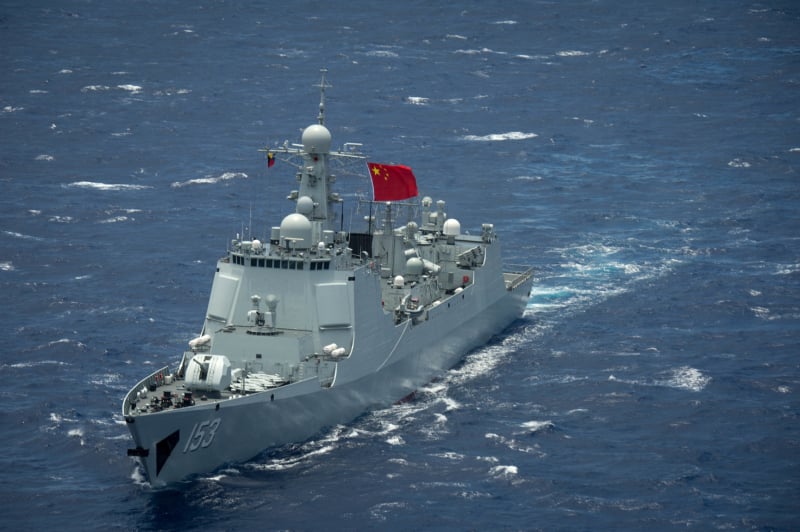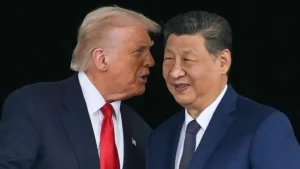Chinese Yuan depreciated sharply, prompting an urgent repurchase by the Central Bank
The recent significant drop in the value of the Chinese Yuan has caught the attention of the global financial sector. The Yuan fell to a 16-year low of 7.32 against the dollar before bouncing back to 7.26. This depreciation, while advantageous for exporters by reducing the cost of their goods overseas, has ignited worries about the stability of China’s economy.
In an attempt to address this, the People’s Bank of China (PBOC) has urgently initiated a reverse repurchase. This is a process where the central bank buys securities from commercial banks with a promise to resell them in the future. This strategy is aimed at ensuring liquidity in the banking system and stabilizing the currency.
Despite the PBOC’s intervention providing some temporary relief, the situation remains uncertain. The fall in the Yuan’s value and the subsequent actions by the PBOC highlight the difficulties facing China’s economy and the intricate balance it needs to maintain in the global economic environment.
Bearish sentiment among investors is snow balling recently the Chinese Yuan has depreciated against almost all major currencies with the Yuan against the US dollar hitting its lowest level in six months. The People’s Bank of China has urgently intervened with repurchase agreements to stabilize the currency, Bloomberg reported that the depreciation of the Yuan is driven by investors continuing to sell Chinese assets causing bearish sentiment towards the Yuan to escalate like a snowball effect. On May 29th the Yuan depreciated to 7.2484 to1 US dollar, closing at 7.1106 Yuan that day, down five basis points, reaching a new low in nearly 6 and a half months. Thus, the Yuan against the US dollar has depreciated for 10 consecutive days.
At the same time there have been reports in the market that large Chinese banks have bought US dollars in the off shore forward market and sold them in the spot market to stabilize the Yuan exchange rate. On the same day the People’s Bank of China issued a notice stating that in order to maintain stable liquidity at the end of the month it would start 7 Day reverse repurchase operations of 250 billion Yuan from that day with the interest rate remaining steady at 1.8%. By this calculation a net injection of 248 billion Yuan was made into the open market in a single day the large just since April 30th. With the emergency intervention the Yuan against the US dollar saw a slight rebound on May 30th but the situation of the Yuan exchange rate hitting a new low in over 6 months remained unchanged.
Bloomberg reported that what was a bad April for the Yuan has turned into an even worse May. Bloomberg believes that the main reason for the depreciation of the Yuan is that investors continue to sell Chinese assets due to concerns about the fragility of the Chinese economy. There port states that the weakness of the Yuan is worrisome because despite the general decline in the US dollar, the Yuan is still depreciating. This indicates that the current pressure mainly comes from pessimism about the fundamentals of the Chinese economy.
Since investors are betting that the US may be approaching an interest rate cut cycle the Yuan started the month relatively strong. However, the optimism was quickly over shadowed by Beijing’s inadequate economic stimulus measures signs of capital outflows and concern about the US China trade conflict. Data compiled by Bloomberg shows that since May this year the Yuan has depreciated against all major currencies except the Argentine Peso. The exchange rates of the Yuan against 24 trading partner currencies have also shown the worst monthly performance in nearly a year. Becky Luo, head of China Macro Strategy at Standard Chartered Bank forecasted that the Yuan will continue to lag behind other currencies especially in the case of a weak US dollar. This is because the Yuan is a managed currency and benefits less from the depreciation of the US dollar.
The significant depreciation of the Chinese Yuan against the US dollar has led to an urgent intervention by the People’s Bank of China through a reverse repurchase operation. This move, while aimed at stabilizing the currency and ensuring liquidity, underscores the gravity of the situation. The depreciation has had a drastic impact on China’s economy, raising concerns about its stability and future growth. As China navigates this economic challenge, the actions of its central bank and the performance of the Yuan will continue to be critical indicators of the country’s economic health and resilience.













